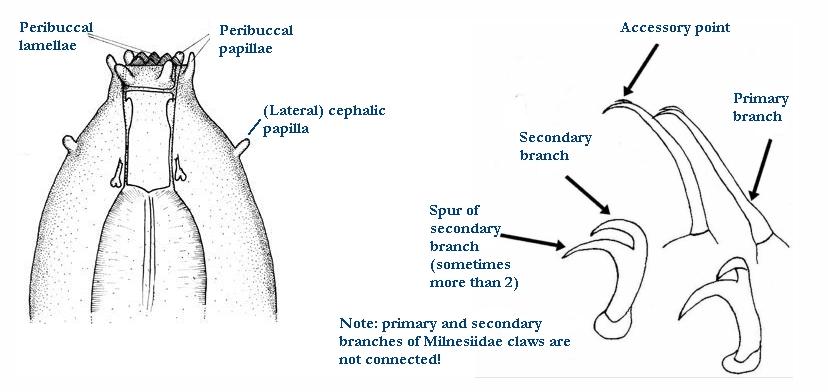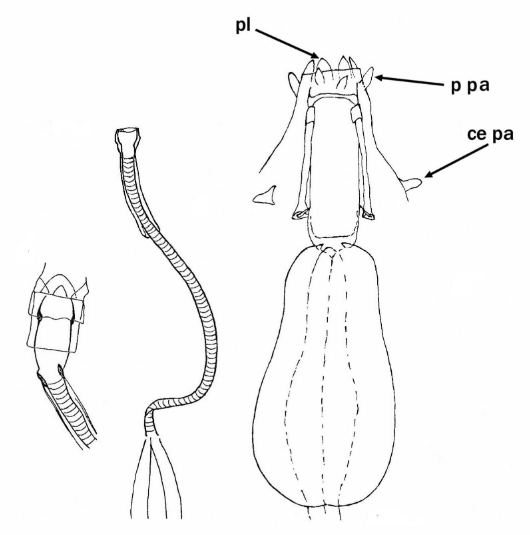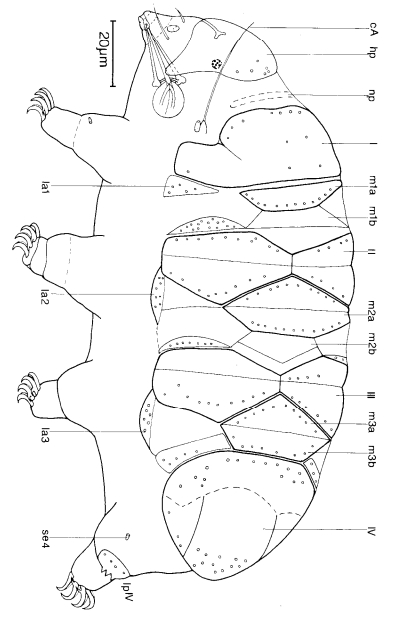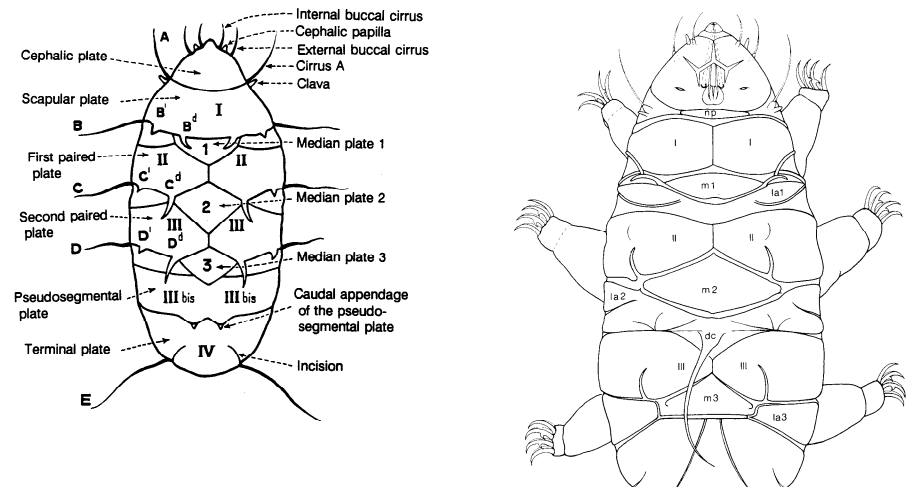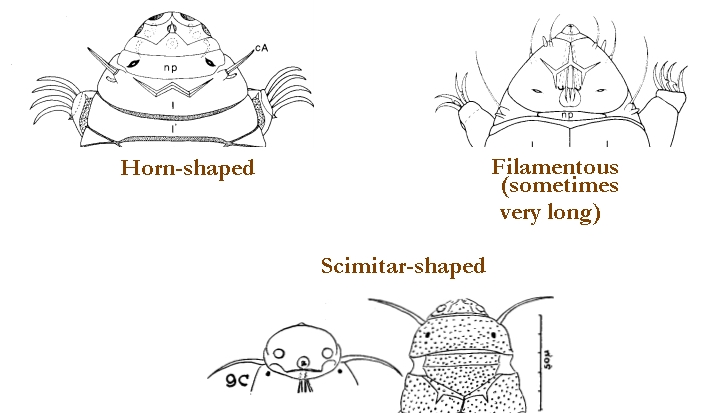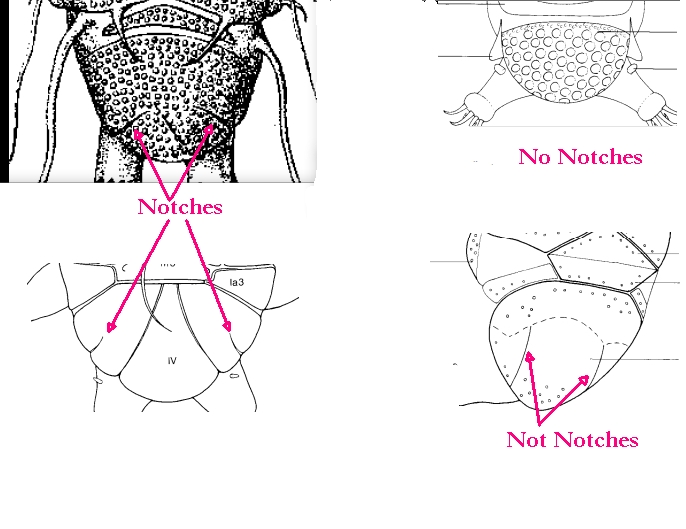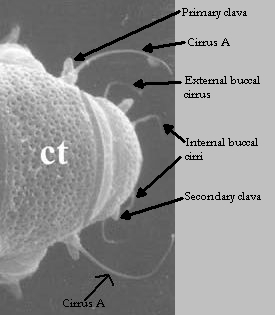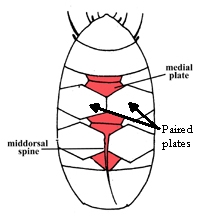Parhexapodibius

Genus description from Schuster et al. 1980: “Peribuccal papulae and buccal lamellae absent; six peribuccal lobes present. Buccal tube short, rigid, without spiraled thickenings. Pharynx with apophyses and macroplacoids; with or without microplacoids; without septulum. Cuticle without pores. Two double claws of each of legs I-III of similar size and shape; claws not connected; without lunulae. Fourth […]
Apodibius
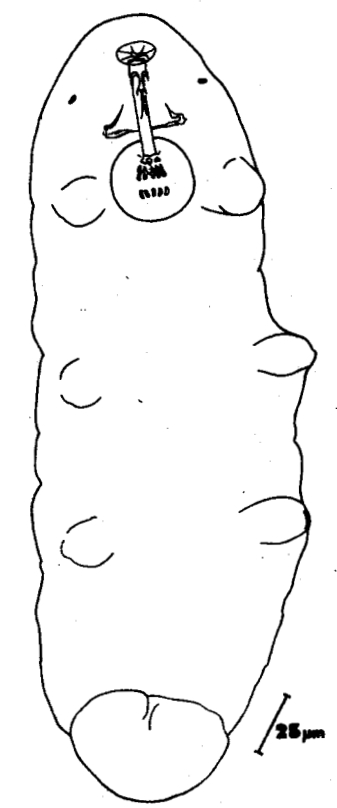
Isohypsibiidae from Marley et al. 2011: “Isohypsibioidea. Claw pairs of similar size and shape. External and internal claws exhibiting articulation (the basal section and secondary branch form a solid unit while the primary branch and secondary branch articulate). Claws Isohypsibius-type, forming a right-angle between basal section and secondary branch. AISM ridge-like.” Genus description from Dastych 1983: “Buccal apparatus […]
Dastychius
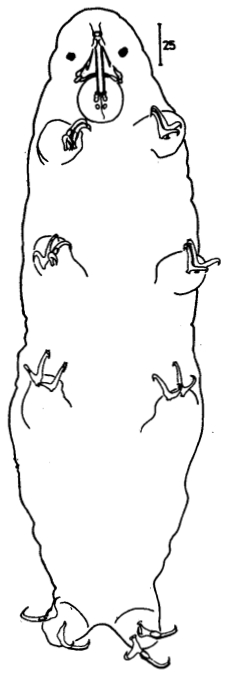
Genus description from Pilato 2013: “Claws of the Isohypsibius type; double claws of the same leg slightly different in shape and size; rigid buccal tube without ventral lamina but with a dorsal and a ventral apophysis for the insertion of the stylet muscles in shape of long, continuous ridges tailing off caudally and almost reaching the […]
Doryphoribius
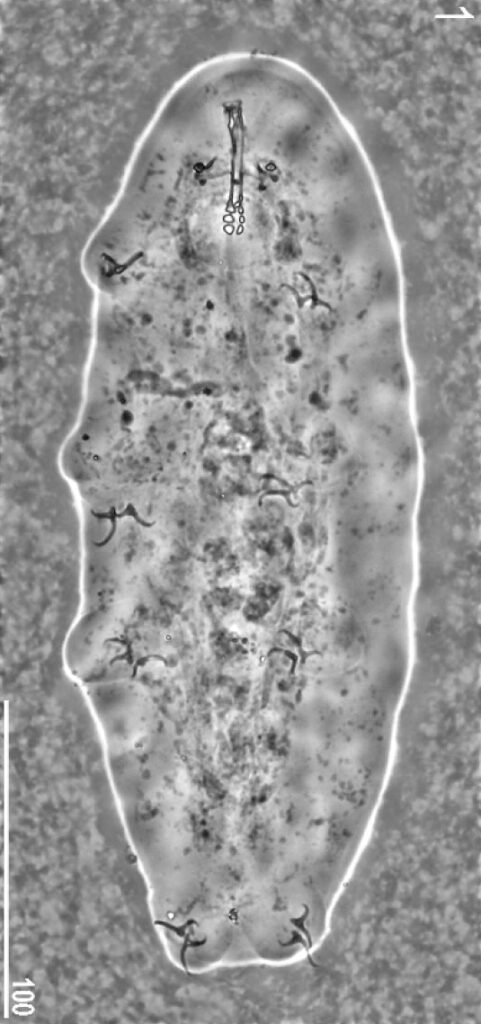
Isohypsibioidea from Marley et al. 2011: “Parachela. Claws asymmetrical (2121); Isohypsibius-type claw pairs; AISM ridged.” Isohypsibioidea from Bertolani et al. 2014: “Double claws asymmetrical with respect to the median plane of the leg (2121), normally with similar shape and size on each leg; double claws of the Isohypsibius type (secondary branch of the external claw inserted perpendicularly on the claw basal tract), […]
Eremobiotus
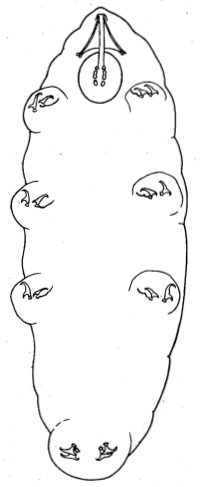
Genus description from Biserov 1992: “Six peribuccal papulae and six peribuccal lobes present; buccal lamellae absent. Bucco-pharyngeal apparatus of Isohypsibius type. The first three pairs of legs with two double claws of similar size, Isohypsibius type but with very wide (about 180°) angle between the primary and secondary branches, at any rate in internal claws.The fourth pair of legs […]
Fractonotus
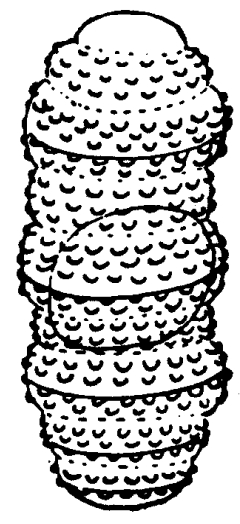
Genus description from Pilato 1998: “Microhypsibiidae; paired elliptical organ present on the head; buccal tube rigid; ventral lamina absent. Dorsal and ventral apophyses for the insertion of the stylet muscles asymmetrical with respect to the frontal plane; the dorsal apophyses split into two clearly distinct portions: the anterior portion is a stumpy hook with a […]
Halobiotus

Isohypsibioidea from Marley et al. 2011: “Parachela. Claws asymmetrical (2121); Isohypsibius-type claw pairs; AISM ridged.” Isohypsibioidea from Bertolani et al. 2014: “Double claws asymmetrical with respect to the median plane of the leg (2121), normally with similar shape and size on each leg; double claws of the Isohypsibius type (secondary branch of the external claw inserted perpendicularly on the claw basal tract), […]
Haplohexapodibius
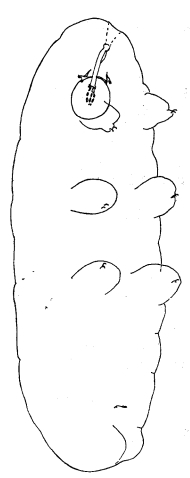
Genus description from Pilato & Beasley 1987: “hind legs reduced to short stumps lacking claws. First three pairs of legs with two single claws. Bucco-pharyngeal apparatus with the buccal tube provided with the ventral strengthening bar. Mouth without peribuccal lamellae, provided with 6 peribuccal papulae and 6 peribuccal lobes. Pharyngeal bulb provided with apophyses and […]
Haplomacrobiotus
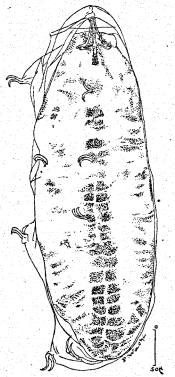
Genus description from May 1948: “… la présence de deux griffes simples…” Translated: “…presence of two simple claws…” Note: May describes simple claws (lacking secondary branches) on all eight legs; Ramazzotti & Maucci report this on the first three legs only, with a tiny secondary branch on legs IV, barely visible (not from May, perhaps […]




